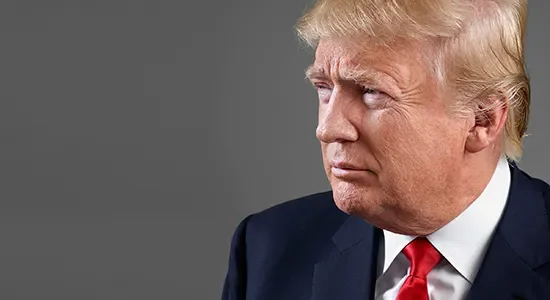

Climate change in the Trump era
By Dr Diarmuid Torney
World leaders gather this weekend in Italy for the annual G7 leaders’ summit. It will be the first such gathering of world leaders since Donald Trump’s election. Climate change will be high on the agenda. Trump has said that he will wait until after the G7 summit to decide whether the US will remain a party to the landmark Paris Agreement on climate change, concluded by nearly 200 countries in December 2015.
Whether Trump pulls out of the Paris Agreement, it is clear that his presidency is bad news for global action to combat climate change. His appoints to key positions were an early indication of his intentions: former Exxon CEO Rex Tillerson as Secretary of State, and Scott Pruitt as head of the Environmental Protection Agency, which he sued fourteen times as Attorney General of Oklahoma.
In March, Trump signed an executive order seeking to dismantle much of Obama’s climate legacy. This order commenced the process of unwinding Obama’s Clean Power Plan, a policy that sought to reduce carbon dioxide emissions from power plants. The order also overturned a previous moratorium on coal leases on federal lands, and sought to downplay consideration of the future costs of carbon emissions in policymaking.
New opportunities
Against this gloomy backdrop, Trump’s actions present new opportunities for the rest of the international community that remains committed to taking action to combat climate change. It is crucial that other big players, including the EU, India and China, maintain their commitment to climate action.
This week, Dublin City University hosted a major international conference, with support from the Irish Environmental Protection Agency, to discuss how to deepen collaboration on climate change between the EU and India. The conference was addressed by high level officials from India and the EU, including Jayant Mauskar, a member of the Indian Prime Minister’s Council on Climate Change, and Jacob Werksman, Principal Advisor for international climate policy at the European Commission.
In fact, the world has been here before. In March 2001, then US President George W. Bush announced he was pulling the US out of the Kyoto Protocol, a predecessor climate pact to the Paris Agreement. Back then, the European response was swift and united. The EU pledged to forge ahead with Kyoto despite US withdrawal and, to the surprise of many observers, succeeded in bringing the Protocol into force.
A changed world
Fast forward to 2017 and the context is very different. In fact, one of the most encouraging developments has been the emergence of new springs of action on climate change around the world. While in 2001 it fell to the EU maintain global momentum, today the rest of the world is forging ahead with clean energy investment, driving down the cost of new technologies.
The new paths taken by China and India are particularly encouraging. China, long criticised for the environmental damage caused by decades of rapid economic growth, is also taking steps to move decisively towards a lower-carbon—though not yet a low-carbon—economy.
India, meanwhile, is also taking climate change and broader sustainability concerns more seriously and has set incredibly ambitious targets for deployment of renewable energy. Meanwhile, India faces huge challenges in poverty eradication and development, with 249 million Indian citizens still lacking access to electricity. Eradicating poverty while staying within safe ecological thresholds will be a critical challenge for India over the coming decades.
On top of this, the US is no longer the world’s largest carbon emitter. In fact, the US share of global carbon emissions has declined from 22 percent in 2001 to 14 percent in 2015—still significant but not as central as it was when Bush withdrew from Kyoto.
The importance of equity
At the heart of global climate politics is the question of equity. Climate change is caused predominantly by rich countries, but its worst impacts will be felt by poorer countries.
In the dialogue between Europe and India, Europe perceives India as a “major emitter” of greenhouse gases, and expects India to play a central role in the global response to climate change. India faces huge challenges in poverty eradication, and expects Europe to realise the constraints it faces. India also expects Europe, with its high levels of consumption to take more responsibility for reducing damaging emissions. The value of this week’s conference hosted by Dublin City University is to provide a space to bridge these differences in perspective.
Time is not on our side. The scale of the decarbonisation challenge remains daunting. According to the United Nations, countries around the world need to cut a further 25% from predicted 2030 greenhouse gas emissions levels in order to limit global warming to 2 degrees Celsius, a key threshold to avoid the most dangerous consequences of climate change. In the face of extreme short-sightedness on the part of the Trump administration, the rest of the world needs to come together to defend global action to combat climate change.
